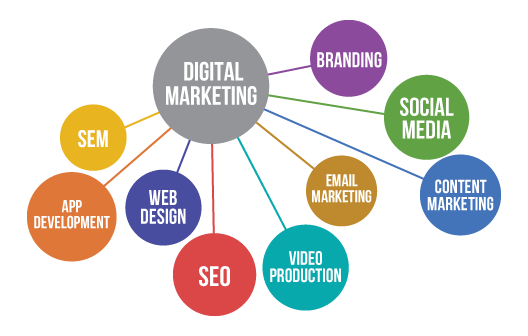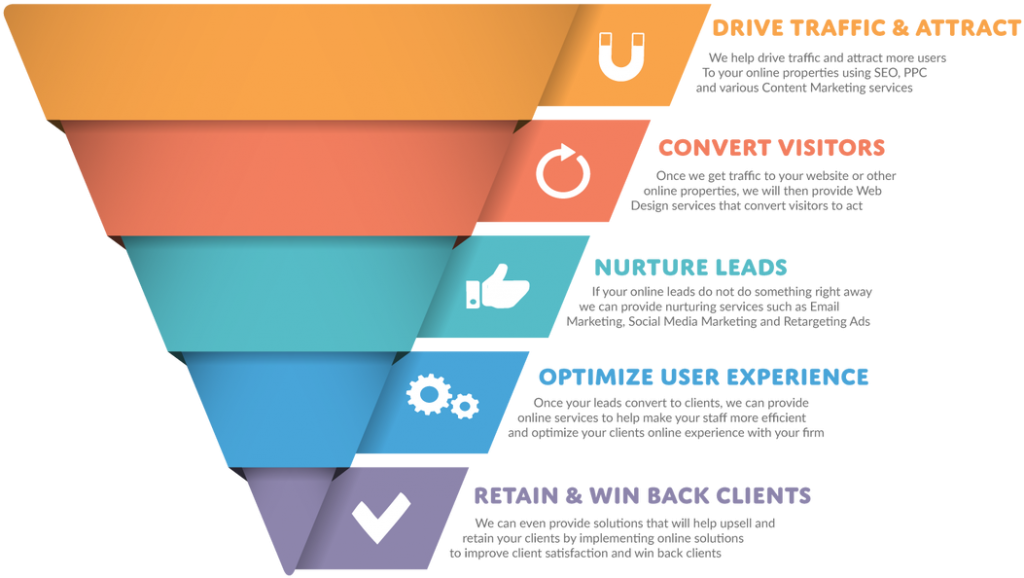Digital Marketing Strategies

Digital Marketing Strategies

Planning
Digital marketing planning is a term used in marketing management. It describes the first stage of forming a digital marketing strategy for the wider digital marketing system. The difference between digital and traditional marketing planning is that it uses digitally based communication tools and technology such as Social, Web, Mobile, Scannable Surface. Nevertheless, both are aligned with the vision, the mission of the company and the overarching business strategy.
Stages of planning
Using Dr. Dave Chaffey’s approach, the digital marketing planning (DMP) has three main stages: Opportunity, Strategy, and Action. He suggests that any business looking to implement a successful digital marketing strategy must structure their plan by looking at opportunity, strategy and action. This generic strategic approach often has phases of situation review, goal setting, strategy formulation, resource allocation and monitoring.

1) Opportunity
To create an effective DMP, a business first needs to review the marketplace and set ‘SMART’ (Specific, Measurable, Actionable, Relevant, and Time-Bound) objectives. They can set SMART objectives by reviewing the current benchmarks and key performance indicators (KPIs) of the company and competitors. It is pertinent that the analytics used for the KPIs be customized to the type, objectives, mission, and vision of the company.
Companies can scan for marketing and sales opportunities by reviewing their own outreach as well as influencer outreach. This means they have competitive advantage because they are able to analyse their co-marketers influence and brand associations.
To seize the opportunity, the firm should summarize its current customers’ personas and purchase journey from this they are able to deduce their digital marketing capability. This means they need to form a clear picture of where they are currently and how many resources they can allocate for their digital marketing strategy i.e. labor, time, etc. By summarizing the purchase journey, they can also recognize gaps and growth for future marketing opportunities that will either meet objectives or propose new objectives and increase profit.
2) Strategy
To create a planned digital strategy, the company must review their digital proposition (what you are offering to consumers) and communicate it using digital customer targeting techniques. So, they must define online value proposition (OVP), this means the company must express clearly what they are offering customers online e.g. brand positioning.
The company should also (re)select target market segments and personas and define digital targeting approaches.
After doing this effectively, it is important to review the marketing mix for online options. The marketing mix comprises the 4Ps – Product, Price, Promotion, and Place. Some academics have added three additional elements to the traditional 4Ps of marketing Process, Place, and Physical appearance making it 7Ps of marketing.
3) Action
The third and final stage requires the firm to set a budget and management systems; these must be measurable touchpoints, such as the audience reached across all digital platforms. Furthermore, marketers must ensure the budget and management systems are integrating the paid, owned, and earned media of the company. The Action and final stage of planning also requires the company to set in place measurable content creation e.g. oral, visual or written online media.
After confirming the digital marketing plan, a scheduled format of digital communications (e.g. Gantt Chart) should be encoded throughout the internal operations of the company. This ensures that all platforms used fall in line and complement each other for the succeeding stages of digital marketing strategy.
Understanding the market
One way marketers can reach out to consumers, and understand their thought process is through what is called an empathy map. An empathy map is a four-step process. The first step is through asking questions that the consumer would be thinking in their demographic. The second step is to describe the feelings that the consumer may be having. The third step is to think about what the consumer would say in their situation. The final step is to imagine what the consumer will try to do based on the other three steps. This map is so marketing teams can put themselves in their target demographics shoes. Web Analytics are also a very important way to understand consumers. They show the habits that people have online for each website. One particular form of these analytics is predictive analytics which helps marketers figure out what route consumers are on. This uses the information gathered from other analytics and then creates different predictions of what people will do so that companies can strategize on what to do next, according to the people’s trends.
Consumer behavior – the habits or attitudes of a consumer that influences the buying process of a product or service. Consumer behavior impacts virtually every stage of the buying process specifically in relation to digital environments and devices.
Predictive analytics – a form of data mining that involves using existing data to predict potential future trends or behaviors. Can assist companies in predicting future behavior of customers.
Buyer persona- employing research of consumer behavior regarding habits like brand awareness and buying behavior to profile prospective customers. Establishing a buyer persona helps a company better understand their audience and their specific wants/needs.
Marketing Strategy – strategic planning employed by a brand to determine potential positioning within a market as well as the prospective target audience; involves two key elements: segmentation and positioning.By developing a marketing strategy, a company is able to better anticipate and plan for each step in the marketing and buying process.